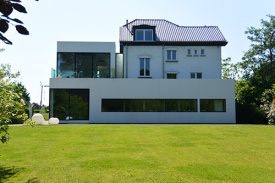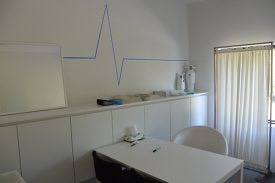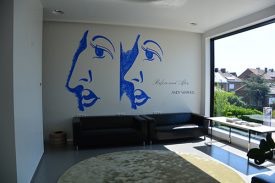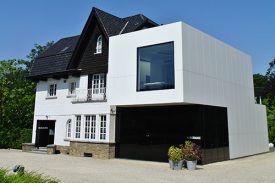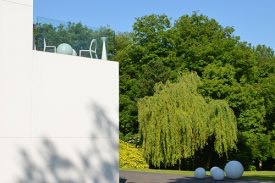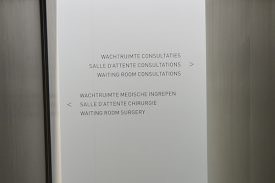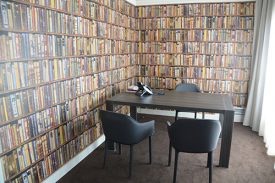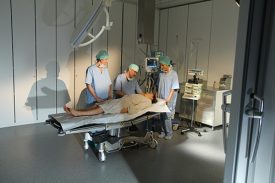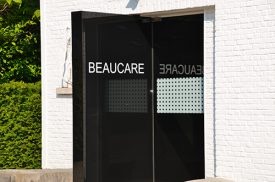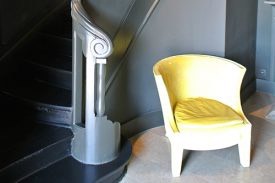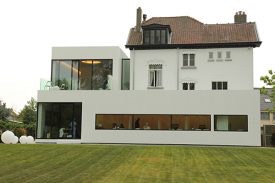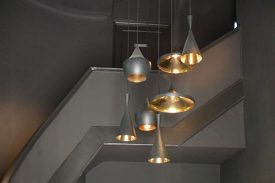The nose is a central and important feature of the face. It’s an organ which is very often looked at by others or in the mirror by ourselves.
Reshaping the nose is a major operation because of the complex anatomy of this organ. A correction of the shape of the nose is often a very emotional event too because of the physical influence on the self-image. Careful analysis of the existing shape, of complaints about it and of the desired change, is necessary to gain the best results.
Nose correction is a cosmetic surgical operation by which the size and shape of the nose can be changed. The correction varies from a simple operation of the nose tip or nostrils to a complicated operation of the nose bridge or the whole nose.
Ideally, the nose is located between two lines, which go down from the inner eye corner. The middle line of the nose basis must be straight and also the width of the nose basis must fall within the inner eye corners.
Sometimes the deviation is so big that a disturbing image is created. This way a nose with a lump might be defacing. But a nose can also be too big, too small, too long or too wide in proportion to the rest of the face. Or you can have a bent nose as a consequence of an accident. In all these cases it’s a matter of aesthetical problems.
But also physical problems can make you consider a nose correction. In case the shape of the nose is not correct, this might lead to headaches or blocks. If these problems frequently occur, a nose correction will probably be desired. The one who comes to a plastic surgeon to ask for a correction of a nose which is too big, might get the advice to consider a chin-implant. Because a receding chin causes the nose to be more marked.
Further more age plays a role. A plastic surgeon will give the advice only to consider a nose correction when your facial development is approaching maturity. This is usually around the age of eighteen. There is in fact no upper age limit for nasal reconstruction. As years go by, the cartilage becomes thinner and its elasticity decreases. This changes the look of the nose. Therefore the operation might also be performed at an advanced age.
In case of most nose corrections the bone tissue and cartilage are reshaped or removed. The incisions are mostly made at the inner side of the nose. They will be invisible after the operation. In some cases the incision is made in the septum (partition) of the nose, in this case a little scar might be visible afterwards.
In case of reduction of the nostrils, little parts of bone tissue at the underside of the nostrils are removed.
Sutures will fall exactly in the fold between nose and cheeks. This way there will be no visible traces from the operation.
During one day, nose plugs (nasal tampons) are introduced to stop possible bleeding.
After completion of the nose correction, a splint will be placed over the nose, which must remain there for approximately seven to ten days. In the meantime, taking a shower is perfectly possible. The tampons in the nose oblige the client to temporarily breathe through the mouth. Because this causes a dry mouth and throat, it’s important to drink enough. When the nasal tampons are removed, it’s possible to clean the nostrils very carefully and to treat them with ointment. Because the mucous membrane is still swollen due to the operation, the nose might be blocked for some time. A saline solution will solve this problem. It’s advisable not to blow your nose during the first two weeks. Sniffing and carefully ‘sniffing out’ with open nostrils is allowed.
It’s normal that the face is swollen and discoloured after the operation and that this becomes a bit worse during the first 48 hours. Swelling might be worse at one side in comparison to the other, also when the nose correction is performed symmetrically. To sleep on two cushions and to sit upright and walk around during the day, will enhance the blood circulation. In this case, swelling and discolouring will disappear soon. When the bandage can be removed, the result of the nose reshaping will be visible. The discolouring will disappear after two weeks. At this moment, most people restart their daily activities.
Taking medicines is only allowed after a consultation with the plastic surgeon because some medicines dilute the blood. In case of pain, a Paracetamol-tablet will mostly suffice. To counter infections, it’s advisable to use an antibiotic-ointment on, under and at the inside of the nose. Clothes which must be pulled over the head will be uncomfortable during the first weeks. To bend, lift or making great efforts causes too much pressure on the head. It’s therefore better to avoid these acts. Be also careful with sports during the first weeks. Wearing glasses is only possible when these are attached to the head by band aid (plaster). Finally the nose tip might be numb for a few months to a year after the operation. But this will automatically disappear.
If it is well-performed, a nose correction won’t cause any problems. But is stays an operation, with the usual risks. If the patient loses a lot of deep red blood, then he or she should immediately contact the plastic surgeon. The same should be done when the nose is still completely blocked after two days, when the body temperature is still 38°C or more and when the edges of the wound become red and swollen.
The correction of the shape of the nose is quickly seen. As months go by, the result will only become more beautiful, because swelling will completely disappear. The initial feeling of disappointment, which people sometimes experience after an operation, will soon disappear.
So be aware of the fact that a nose correction does not immediately give results. Persons who are aware of that and who have realistic desires of the correction, will be very happy after having a nose reshaping.




